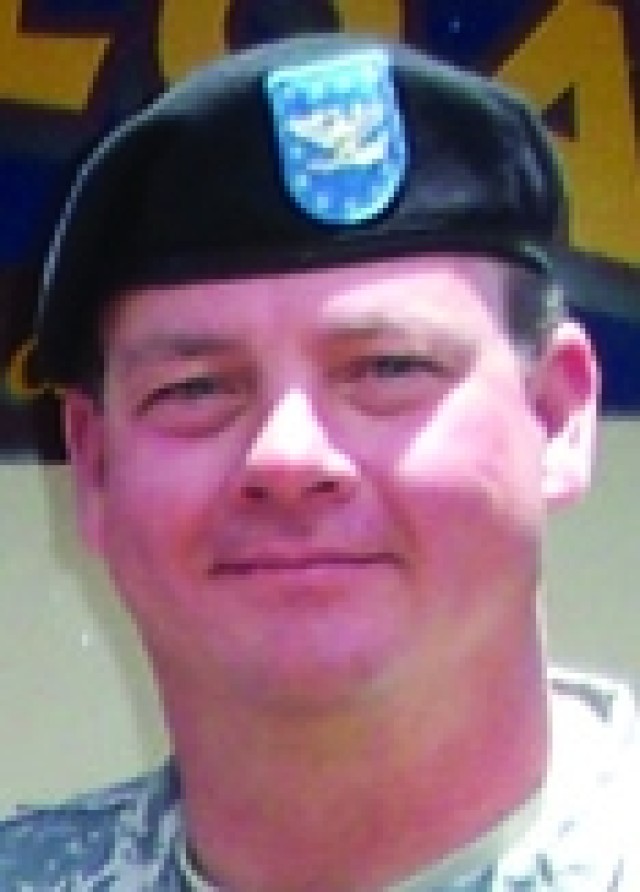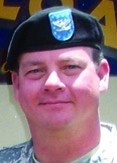<p><b><i>O'Keefe stresses importance of sustainment, protection</i></b></p>
<p>POHAKULOA TRAINING AREA, Hawaii - Col. Michael O'Keefe, commander of the U.S. Army Environmental Command, visited Pohakuloa Training Area June 6. O'Keefe's visit was an essential part of his U.S. Army Garrison-Hawaii itinerary. </p><p> "The Army Environmental Command supports the environmental work at Army installations, such as PTA," O'Keefe said, explaining the trip was his opportunity to get out and see all the great accomplishments and to find out how he can help the Army's environment. </p><p>O'Keefe first visited PTA 27 years ago as a lieutenant. He said it's interesting to come back and view the area through an "environmental lens." He said he sees PTA as an important training area. </p><p> "I think, first and foremost, PTA is an invaluable training area for the Army in Hawaii and also for the other services. It's an area where, very clearly, the Army has to do a number of things to take care of the environment." </p><p>He continued, "It's got a lot of natural and cultural resources, and it is clear to me that the Army is stepping up to do all the right things to take care of Hawaii's valuable resources." </p><p>At the hill, better known as Puu Pohakuloa, Deckey Lopez, PTA range operations supervisor, Directorate of Plans, Training and Mobilization, and Tom Carll, PTA supervisory general engineer, Directorate of Public Works, gave O'Keefe an overview of PTA's cantonment area and ranges, including Bradshaw Army Air Field. </p><p>After short stops inside of one of the 1950s-era, Quonset hut-style barracks and a modern Soldiers barracks, PTA Natural and Cultural Resources staff, led by Bill Godby, PTA archaeologist, and Lena Schnell, Natural Resources program manager, gave O'Keefe an update on the area's natural and cultural resources. </p><p>Lt. Col. Warline Richardson, commander, USAG-PTA, discussed the installation's mission, operations and various support activities. </p><p>Later, O'Keefe toured PTA's Interpretive Garden, which exhibits Hawaii's unique natural and cultural resources, including several of Hawaii's threatened and endangered plant species, a small fire pit, and even a replica of a religious shrine. </p><p>The highlight of the day was the environmental tour of PTA's Silene enclosure, in the vicinity of Deadman's Curve and nearby cultural sites. </p><p>At the sites, O'Keefe saw firsthand how early Hawaiians used the area, such as for lava tunnel shelters to protect them from the harsh natural elements. O'Keefe also visited PTA areas where modern-day goats and pigs roam. </p><p>O'Keefe, who holds a doctorate and master's in chemistry, a Master of Science in national resource strategy, and a Master of Business Administration, understands the importance of an environmental staff at Army installations such as PTA. </p><p> "They are essential as the Army has compliance requirements from across the spectrum of pollution prevention to natural and cultural resource preservation. More importantly, full efforts in environmental work have been shifting over the years to put a stronger emphasis on sustainability," O'Keefe said. </p><p>He added, instead of just preventing a violation of the law, the Army is looking to set the conditions to care for resources and keep training areas viable for future generations. </p><p>A significant relationship exists between the environment and today's Army, which has a dual responsibility of fulfilling its mission to train the force and its duty to protect the environment. </p><p> "Soldiers on the ground are called 'boots in the mud,'" O'Keefe explained. "Here, they are 'boots in the lava dust.' </p><p> "Soldiers need to have a place to train. It is the moral responsibility of our country to properly train Soldiers into battle," he continued, "and to do that is by having a training installation that prepares our young patriotic folks to be properly trained when they do have to deploy and fight." </p><p>We also have the responsibility to be good neighbors with the communities around us because we are paid for with taxpayers' money, and we are responsible to the American people, O'Keefe said. </p><p>We try to do the right things that are essential to the future, and try to be very responsible on how we spend taxpayers' dollars, he added.</p>


Social Sharing